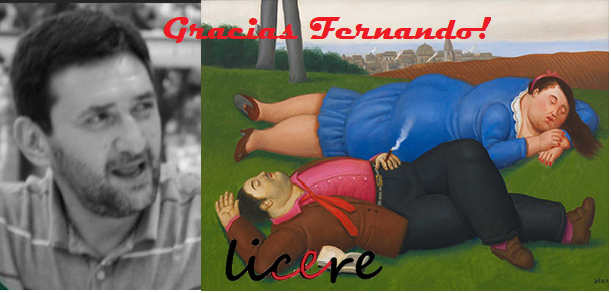Perceptions about Brazilian's Leisure Public Places, Security and Life Quality
DOI:
https://doi.org/10.35699/2447-6218.2023.45678Keywords:
Quality of life, Public leisure spaces, SafetyAbstract
Objective: To analyze the perceptions about public leisure spaces, safety and quality of life of Brazilian adults. Method: the sample consisted of 5,259 adults, representing a city in each of the five Brazilian regions, namely: Florianópolis (SC), Goiânia (GO), João Pessoa (PB), Palmas (TO) and Vitória (ES). Characterizing itself as a cross-sectional descriptive epidemiological research. The instrument applied in the research was the standardized questionnaire, called Public Opinion Research (POP). Binary Logistic Regression was used to identify the odds ratios, being analyzed in the adjusted model when the variables reached the pre-established criterion of p<0.05. Results: At least one third of the sample (35.2%) indicated a negative perception of quality of life. Those who almost never or never attended public leisure spaces and those who perceived them as unpleasant, insufficient and insecure and those who did not feel safe during the night and day in their cities showed a greater chance of presenting it. Conclusion: Based on the associations found after an adjusted analysis, it is suggested that public spaces for leisure and safety can intervene in the quality of life, so it is recommended solutions to incentive and maintain those, in a way that positively affects their perception.
Downloads
References
ADHIKARI, Binay et al. Community design and hypertension: walkability and park access relationships with cardiovascular health. International Journal of Hygiene and Environmental Health, v. 237, p. 113820, 2021.
BRAUBACH, Matthias et al. Effects of urban green space on environmental health, equity and resilience. In: Nature-based solutions to climate change adaptation in urban areas. Springer, Cham, 2017. p. 187-205.
CHEESBROUGH, Alison E.; GARVIN, Theresa; NYKIFORUK, Candace IJ. Everyday wild: urban natural areas, health, and well-being. Health & place, v.56, p.43-52, 2019.
COELHO, Christianne de Faria; BURINI, Roberto Carlos. Atividade física para prevenção e tratamento das doenças crônicas não transmissíveis e da incapacidade funcional. Revista de Nutrição, v.22, p.937-946, 2009.
FATHI, Sadegh et al. The role of urban morphology design on enhancing physical activity and public health. International journal of environmental research and public health, v.17, n.7, p.2359, 2020.
FLORINDO, Alex Antonio et al. Public open spaces and leisure-time walking in Brazilian adults. International journal of environmental research and public health, v.14, n.6, p.553, 2017.
GOMES, Christianne Luce. Lazer: necessidade humana e dimensão da cultura. Revista Brasileira de Estudos do Lazer, v.1, n.1, p.3-20, 2014.
GRAŽULEVIČIENĖ, Regina et al. Environmental quality perceptions and health: A cross-sectional study of citizens of Kaunas, Lithuania. International journal of environmental research and public health, v.17, n.12, p.4420, 2020.
HELBICH, Marco. Toward dynamic urban environmental exposure assessments in mental health research. Environmental research, v.161, p.129-135, 2018.
HUMPEL, Nancy; OWEN, Neville; LESLIE, Eva. Environmental factors associated with adults’ participation in physical activity: a review. American journal of preventive medicine, v.22, n.3, p.188-199, 2002.
KIM, Eun Jung; KIM, Jiyeong; KIM, Hyunjung. Does environmental walkability matter? The role of walkable environment in active commuting. International journal of environmental research and public health, v.17, n.4, p.1261, 2020.
KIMIC, K.; POLKO, P. Perception of natural elements by park users in the context of security. In: PROCEEDINGS OF THE PUBLIC RECREATION AND LANDSCAPE PROTECTION. With Sense Hand in Hand! Kˇrtiny, Czech Republic, 10–11 May 2021; FIALOVÁ, J., Ed.; Mendel University in Brno, Czech Republic, 2021; p.354–357, ISBN 978-80-7509-779-8.
KUO, Frances E.; BACAICOA, Magdalena; SULLIVAN, William C. Transforming inner-city landscapes: trees, sense of safety, and preference. Environment and behavior, v.30, n.1, p.28-59, 1998.
LOEWEN, Laura J.; STEEL, Gary Daniel; SUEDFELD, Peter. Perceived safety from crime in the urban environment. Journal of environmental psychology, v.13, n.4, p.323-331, 1993.
MINAYO, Maria Cecília de Souza; HARTZ, Zulmira Maria de Araújo; BUSS, Paulo Marchiori. Qualidade de vida e saúde: um debate necessário. Ciência & saúde coletiva, v.5, p.7-18, 2000.
PASCHOAL, Sérgio Márcio. Qualidade de vida do idoso: elaboração de um instrumento que privilegia a sua opinião. [Dissertação de mestrado]. Mestrado em Saúde Pública, Faculdade de Medicina/USP; São Paulo, 2000.
PEREIRA, Érico Felden; TEIXEIRA, Clarissa Stefani; SANTOS, Anderlei dos. Qualidade de vida: abordagens, conceitos e avaliação. Revista brasileira de educação física e esporte, v.26, p.241-250, 2012.
SILVA, Luiz Antonio Machado da. Sociabilidade violenta: por uma interpretação da criminalidade contemporânea no Brasil urbano. Sociedade e estado, v.19, p.53-84, 2004.
SOARES, Marcela Mello; MAIA, Emanuella Gomes; CLARO, Rafael Moreira. Availability of public open space and the practice of leisure-time physical activity among the Brazilian adult population. International journal of public health, v.65, n.8, p.1467-1476, 2020.
VAGETTI, Gislaine Cristina et al. Domínios da qualidade de vida associados à percepção de saúde: um estudo com idosas de um programa de atividade física em bairros de baixa renda de Curitiba, Paraná, Brasil. Ciência & Saúde Coletiva, v.18, p.3483-3493, 2013.
Downloads
Published
How to Cite
Issue
Section
License
Copyright (c) 2023 LICERE - Revista do Programa de Pós-graduação Interdisciplinar em Estudos do Lazer

This work is licensed under a Creative Commons Attribution-NonCommercial 4.0 International License.

